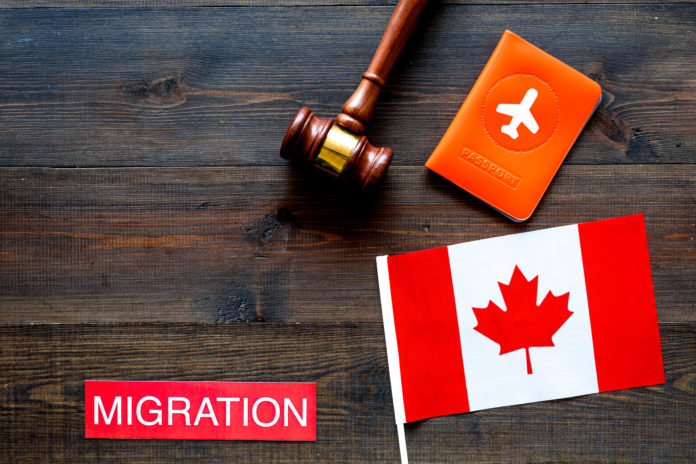
Canada needs to beef up both immigration and the accreditation process for foreign nationals looking to immigrate here, says a leading tax, auditing and consulting services firm.
“There’s … a fundamental shift in the demographic of Canada’s labour force, causing policymakers to explore ambitious immigration goals to address the labour gap,” says economist Tu Nguyen, the environmental, social and governance director with RSM Canada.
“But government, industry associations and organizations will actually need to go further and streamline the accreditation process so that workers educated abroad can fill much-needed roles in Canada. Only then can Canada hope to have more meaningful growth in labour supply and productivity.”
Read More Canada Immigration News
Boom In Canadian College Certificate And Diplomas Driven By International Students
Canada’s Top Seven Best Jobs in Healthcare: All You Need To Know
Canada’s TR to PR Pathway Welcomes Nearly 50,000 Immigrants
The Canadian labour market is very tight.
In Proof Point: Canada’s Labour Shortages Will Outlive A Recession, RBC economists Claire Fen and Nathan Janzen and economics writer Naomi Powell outlined the grim reality for Canadian employers in late July.
“As of June 2022, businesses posted almost 70 per cent more job openings in Canada than pre-pandemic,” they noted. “But these firms were competing for 13 per cent fewer unemployed workers than were available in February 2020.
Watch Video
“The impact is severe: more than half of Canadian businesses say labour shortages are limiting their ability to increase production – up from 40 per cent before the pandemic and 30 per cent a decade ago.”
The historic labour shortage is hitting companies hard.
“Despite a robust recovery from the lockdowns of the COVID-19 pandemic, Canadian economic growth will continue slowing down due to persistent inflation and a historically tight labour market,” says Nguyen.
“But the real long-term challenge will be the labour shortage, with declining worker participation hitting the health care, hospitality and food services industries particularly hard.”
Expect A Recession In 2023 And Higher Bank Of Canada Rates, Warn Economists
In its latest snapshot of the performance of the Canadian economy, its The Real Economy, Canada report, RSM Canada is bullish on even more immigration to help resolve Canada’s labour shortages.
RSM Canada argues the country’s aging population and declining fertility rates mean immigration will be vital to any attempts to replenish the labour pool.
Without robust immigration and the boost to productivity that comes from a steady flow of immigrants, Canada could wind up being dead last for labour productivity among the 38 countries that are members of the Organisation for Economic Co-operation and Development within as little as a decade, warns RSM Canada.
In its report, the firm also forecasts the possibility of a recession early in 2023 with continued inflation and the possibility of a Bank of Canada rate increase putting a further squeeze on Canadian businesses.
On main streets across Canada, things seem as if it’s business as usual.
But help wanted signs to seem to be everywhere and many entrepreneurs are limiting their companies’ hours or putting off planned expansions due to a lack of qualified labour.
Statistics Canada Reported 997,000 Jobs Going Begging For Workers In Second Quarter Of 2022
In its latest quarterly job vacancies report, Statistics Canada reported that Canadian companies were trying to fill 997,000 vacant positions during the second quarter of this year.
That’s the highest number of job vacancies in any quarter of any year on record in Canada.
“Vacancies were up 4.7 per cent, with 45,000 more vacancies, from the first quarter, and 42.3 per cent, 296,500 jobs, higher than in the second quarter of 2021,” noted Statistics Canada.
“The job vacancy rate, which corresponds to the number of vacant positions as a proportion of total labour demand (the sum of filled and vacant positions), was 5.7 per cent in the second quarter, also an all-time high.”
Under the Express Entry system, immigrants can apply for permanent residency online if they meet the eligibility criteria for one of three federal immigration programs, the Federal Skilled Worker Program (FSW), Federal Skilled Trades Program (FST), and Canada Experience Class Program (CEC), or a participating provincial immigration program.
Candidates’ profiles are then ranked against each other according to a points-based system called the Comprehensive Ranking System (CRS). The highest-ranked candidates will be considered for an Invitation to Apply (ITA) for permanent residence. Those receiving an ITA must quickly submit a complete application and pay processing fees, within a delay of 90-days.
Through a Provincial Nominee Programs (PNP) network, almost all of Canada’s ten provinces and three territories can also nominate skilled worker candidates for admission to Canada when they have the specific skills required by local economies. Successful candidates who receive a provincial or territorial nomination can then apply for Canadian permanent residence through federal immigration authorities.
Immigrant investors can also come to Canada under the Start-up Visa program which can grant them Canadian permanent residence.
That program aims to recruit innovative entrepreneurs to Canada and link them with Canadian private sector businesses, such as angel investor groups, venture capital funds or business incubators, and facilitate the establishment of their start-up business in Canada.

